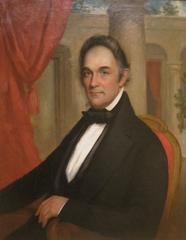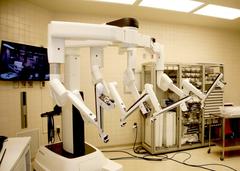Centennial Museum And Chihuahuan Desert Gardens
Centennial Museum and Chihuahuan Desert Gardens: Visiting Hours, Tickets, and Travel Guide to El Paso Historical Sites
Date: 04/07/2025
Introduction
Nestled on the campus of the University of Texas at El Paso (UTEP), the Centennial Museum and Chihuahuan Desert Gardens offer an immersive gateway to the cultural, historical, and ecological richness of the Southwest borderlands. Established in 1936 to commemorate Texas’s centennial, the museum is notable for its Bhutanese-inspired architecture and commitment to preserving and interpreting the region’s dynamic heritage. The adjacent gardens, with over 800 native plant species, serve as a living exhibit on desert ecology and sustainability. Whether you’re a history buff, nature enthusiast, educator, or family seeking an engaging outing, this guide provides essential information for planning your visit—including hours, admission, guided tours, exhibit highlights, accessibility, and travel tips (Centennial Museum Official Site, Chihuahuan Desert Gardens).
Table of Contents
- Introduction
- Historical Background and Significance
- Museum and Gardens Overview
- Visitor Information
- Educational Impact
- Sustainability and Conservation Initiatives
- Frequently Asked Questions (FAQ)
- Visuals and Media
- Conclusion
- References
Historical Background and Significance
Founding and Historical Context
The Centennial Museum was established in 1936 as part of the statewide commemoration of Texas’s independence from Mexico. Located on the UTEP campus—originally founded as the State School of Mines and Metallurgy in 1914—the museum reflects both the region’s mining heritage and its commitment to education.
Architectural and Institutional Importance
The museum is renowned for its Bhutanese-inspired architectural style, characterized by steeply sloping walls, ornate tile details, and symbolic motifs reminiscent of Bhutanese dzongs (fortress-monasteries). This distinctive style is a hallmark of UTEP’s campus and underscores the institution’s global connections and commitment to cultural exchange.
Heritage Preservation and Community Impact
As one of El Paso’s oldest museums, the Centennial Museum serves as a vital repository for artifacts representing the cultural, historical, and natural legacy of the Chihuahuan Desert and borderlands. Its collections highlight the diverse communities that have shaped the region, including Native American, Spanish colonial, and Mexican American populations.
Museum and Gardens Overview
Permanent Collections
Natural History of the Chihuahuan Desert
Exhibits explore the geology, flora, and fauna of North America’s largest desert. Highlights include interactive geological maps, taxidermy displays of native animals, and botanical exhibits explaining plant adaptations (whichmuseum.com, visitelpaso.com).
Cultural and Anthropological Collections
Artifacts from the Mogollon, Jornada, and Casas Grandes cultures, as well as Spanish colonial relics and folk art, showcase the region’s layered cultural history.
Temporary and Rotating Exhibits
Regularly changing exhibits address themes such as border life, migration, environmental conservation, and contemporary art by regional creators. Check the museum events page for current schedules.
Chihuahuan Desert Gardens Features
Established in 1999, the gardens display over 800 native plant species in thematic beds (e.g., medicinal plants, pollinator gardens). The gardens emphasize water conservation and sustainable landscaping, with accessible pathways, interpretive signage, and wildlife habitats (Chihuahuan Desert Gardens).
Notable Artifacts
- Native American pottery and tools
- Spanish colonial religious and trade objects
- Dioramas and historic photographs of El Paso
- Mineral specimens and fossils
Visitor Information
Hours and Admission
- Museum Hours:
- Monday–Saturday: 10:00 AM – 5:00 PM
- Sunday: Closed
- Garden Hours:
- Daily, dawn to dusk
- Admission: Free for all visitors
Tickets and Guided Tours
General admission is free and no tickets are required. Guided tours for groups and schools are available by advance reservation. Tours cover both the museum and gardens, with themes such as “Desert Adaptations” and “Borderland Cultures.”
Accessibility
The museum and gardens are fully wheelchair accessible, with ramps, accessible restrooms, and dedicated parking.
Travel Tips and Nearby Attractions
- Location: 500 West University Avenue (at Wiggins and University), UTEP Campus, El Paso, TX 79902
- Parking: Free campus parking; accessible spaces available
- Nearby Attractions: Magoffin Home State Historic Site, Plaza Theatre, Franklin Mountains State Park, El Paso Museum of Art
- Transit: Accessible by Sun Metro bus routes
Best times to visit: Spring and fall for mild weather and vibrant garden displays. Bring sun protection, water, and comfortable footwear.
Educational Impact
The museum hosts curriculum-aligned field trips for K–12 students, supports university research, and offers public lectures, workshops, and lifelong learning opportunities (UTEP Centennial Museum Education). The gardens serve as a seed bank for rare desert species and provide practical demonstrations for water-wise landscaping.
Sustainability and Conservation Initiatives
The museum and gardens lead by example in regional conservation, promoting xeriscaping, native plant restoration, and biodiversity through certified Texas Wildscape practices.
Frequently Asked Questions (FAQ)
Q: Is there an admission fee?
A: No, admission is free for both the museum and gardens.
Q: What are the visiting hours?
A: Museum: Monday–Saturday, 10:00 AM to 5:00 PM; Gardens: Daily, dawn to dusk.
Q: Are guided tours available?
A: Yes, by advance reservation and at no charge; donations are appreciated.
Q: Is the museum accessible for visitors with disabilities?
A: Yes, with ramps, accessible restrooms, and designated parking.
Q: Can I take photos?
A: Photography is permitted; avoid flash and tripods inside exhibits.
Q: Are pets allowed?
A: Only service animals are permitted.
Visuals and Media
Explore virtual tours and photo galleries on the Centennial Museum website. On-site, exhibits feature high-quality images with descriptive alt tags. The museum app offers interactive maps and multimedia content.
Conclusion
The Centennial Museum and Chihuahuan Desert Gardens are essential destinations for anyone seeking to explore El Paso’s rich history, cultural diversity, and natural wonders. Visitors enjoy free admission, accessible facilities, and a wealth of exhibits and educational opportunities. The Bhutanese-influenced architecture and lush desert gardens create a unique environment that bridges global culture with local heritage. Plan your visit today, and immerse yourself in the stories and landscapes of the Southwest borderlands.
For the latest updates, events, and guided audio tours, download the Audiala app and follow the Centennial Museum on social media. Discover more El Paso attractions in our related articles, and make the most of your visit to this celebrated cultural landmark.
References
- Visiting the Centennial Museum in El Paso: Hours, Tickets, and Historical Insights, 2025, University of Texas at El Paso (https://www.utep.edu/centennial-museum/)
- Centennial Museum and Chihuahuan Desert Gardens: Your Guide to Visiting Hours, Tickets, and El Paso Historical Sites, 2025, WhichMuseum & Visit El Paso (https://whichmuseum.com/museum/centennial-museum-and-chihuahuan-desert-gardens-el-paso-8406), (https://visitelpaso.com/ep-museums)
- Centennial Museum and Chihuahuan Desert Gardens: Visiting Hours, Tickets, and Exploring El Paso’s Unique Bhutanese Architecture, 2025, University of Texas at El Paso (https://www.utep.edu/centennial-museum/virtual-tour)
- Visiting the Centennial Museum and Chihuahuan Desert Gardens: Hours, Tickets, and What to See in El Paso, 2025, University of Texas at El Paso (https://www.utep.edu/centennial-museum/)










